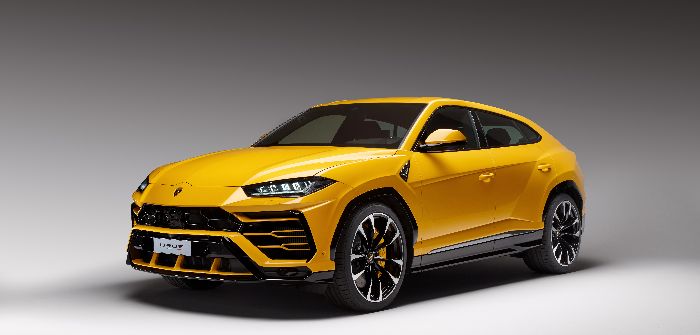Lamborghini has unveiled its long-awaited SUV, fitted with a 4.0-liter V8 twin-turbo aluminum unit. Named after an ancestor of the domestic cattle, the Urus becomes the company’s first car to feature a turbocharged engine.
Labeled by the Italian OEM as the world’s first super-SUV, the Urus promises 0-100km/h in 3.6 seconds, 0-200km/h in 12.8 seconds and the ability to reach a top speed of 305km/h. This is thanks to the V8 motor, which will produce 660ps at 6,000rpm and a maximum torque of 850Nm at 2,250-4,500rpm. And carbon ceramic breaks mean the Urus decelerates almost as quickly, going from 100-0km/h in just over 33m.
While the SUV is built on the same MLB Evo platform as the Audi Q7, it has been developed for performance. The compact engine optimizes the car’s center of gravity through its low-mounted position. With a central turbocharger layout close to the combustion chambers, optimum engine responsiveness is enabled. The use of twin-scroll turbochargers, which run in parallel, promises maximum power in full-load conditions. This reduces turbo lag and ensures maximum torque and smooth provision of power throughout the torque curve, even at low speeds.
Two separate exhaust flows complement the cylinder firing sequence by eliminating cross-interference in the exhaust gas cycle. With a double overhead camshaft and variable valve timing, new cylinder-liner technology reduces weight while ensuring the highest possible performance from the eight-cylinder engine. Cylinder deactivation reduces fuel consumption for a balance between vehicle performance and efficient engine function.
The Lamborghini Urus features an automatic 8-speed electrohydraulically controlled planetary gearbox, which is tuned to provide very short low gear ratios and longer high gears. A highly efficient slip-controlled converter lock-up clutch and specially developed torque converter aim to ensure a responsive engine and high speed at low engine revs for optimal fuel consumption and emissions.
Lamborghini’s venture into the SUV market will reach its first customers in spring next year and will cost US$200,000.


